Markets
Target Market Documents
Overview
U.S. DOE Analysis: Combined Heat and Power (CHP) Technical Potential in the United States March 2016 - The “Combined Heat and Power (CHP) Technical Potential in the United States” market analysis report provides data on the technical potential in industrial facilities and commercial buildings for “topping cycle” CHP, waste heat to power CHP (WHP CHP), and district energy CHP in the U.S. The goal of the report is to provide data on the technical potential for CHP in sufficient detail for stakeholders to consider combined heat and power in strategic energy planning and energy efficiency program design. The study shows there is estimated to be more than 240GW of technical potential at over 291,000 sites within the U.S. Data are provided nationally by CHP system size range, facility type, and state. Each state’s technical potential is shown in detail on state profile pages that include break-downs by size range and facility type.
Target Markets
Target markets are industries that are generally large energy users and/or have the ability and need for process thermal energy (cooling and/or heating).
Target Markets are chosen based on several factors:
- Market sectors, size, and potential
- Opportunity fuels within our region or specific states
- Technical and economic viability of the resources
- Probable system size range
- Economic, energy, and environmental goals of the state or region
- Critical Operational needs
WA
- Washington Overall CHP Technical Potential 03-2016 - Washington has 2,545 MW of CHP technical potential capacity identified at 5,570 sites. A detailed breakdown of Washington technical potential application and size range is available here
- Pulp and paper mills
- Forest products
- Dairies (anaerobic digestion with CHP)
- Wastewater treatment facilities (WWTFs)
- Landfill-to-energy CHP systems
- Food processing facilities (anaerobic digestion with CHP)
- Colleges and universities
- Server Farms
- Critical Facilities

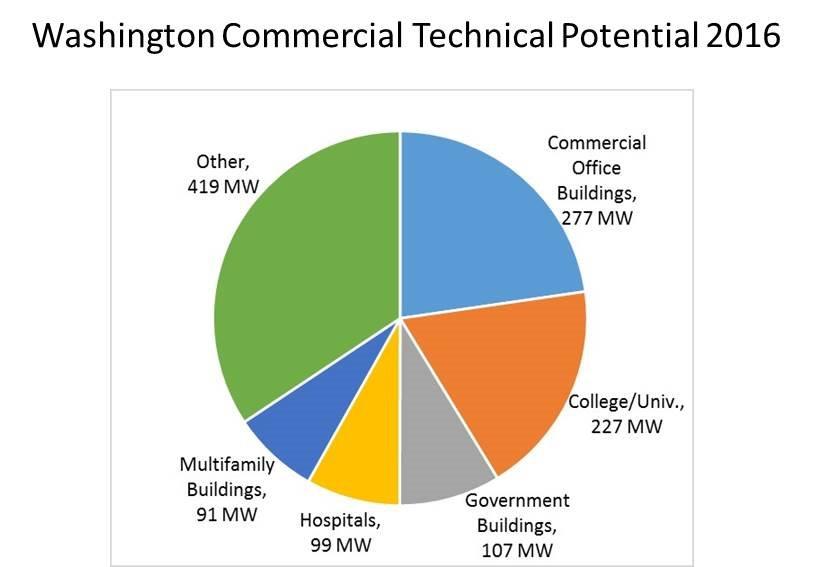
OR
- Oregon Overall CHP Technical Potential 03-2016 - Oregon has 1,342 MW of CHP technical potential capacity identified at 3,466 sites. A detailed breakdown of Oregon technical potential and size range is available here
- Pulp and paper mills
- Forest products
- Dairies
- Wastewater treatment facilities (WWTFs) and landfill-to-energy CHP systems
- Food processors
- Colleges and universities
- Critical Facilities
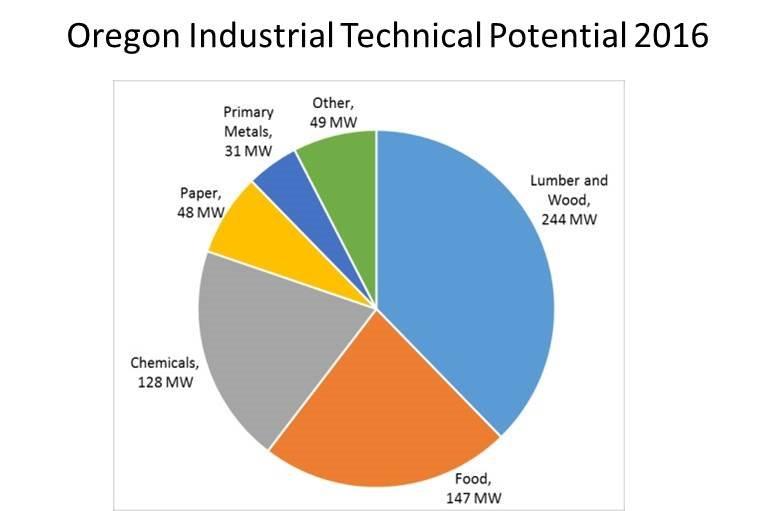
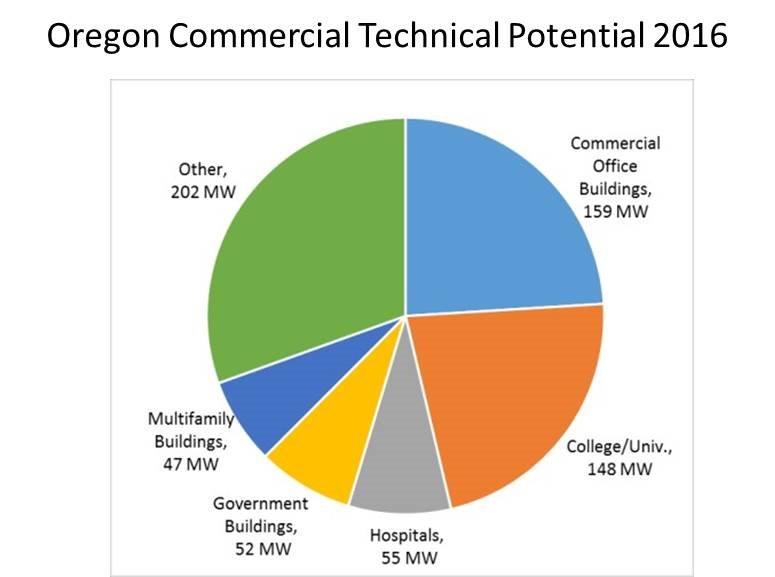
AK
- Rural villages/utilities
- Communities/Utilities on the road system
- Forest Products
- Critical Facilities
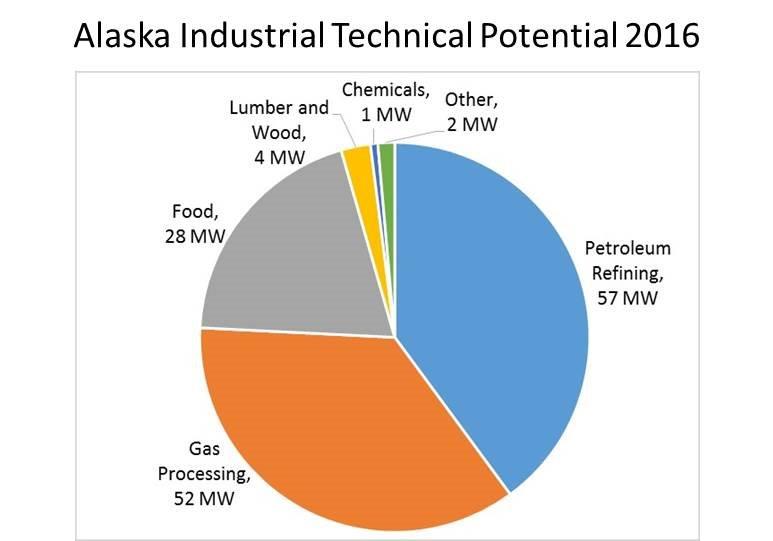
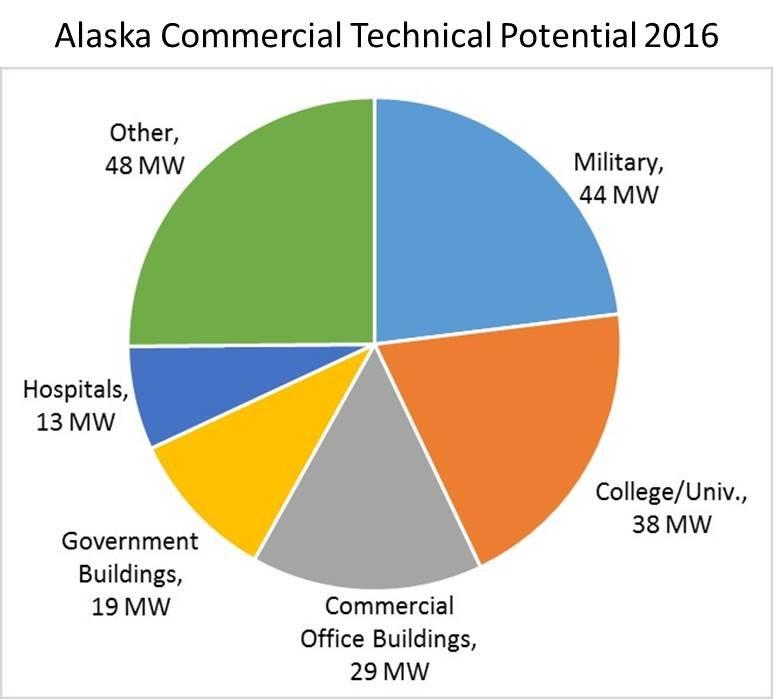
ID
- Pulp and paper mills
- Forest products
- Dairies
- Wastewater treatment facilities (WWTFs) and landfill-to-energy CHP systems
- Food processors
- Critical Facilities
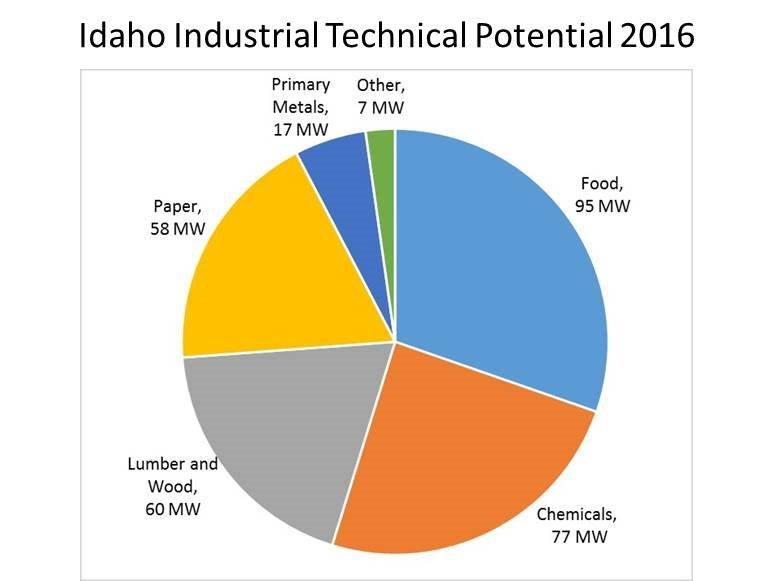
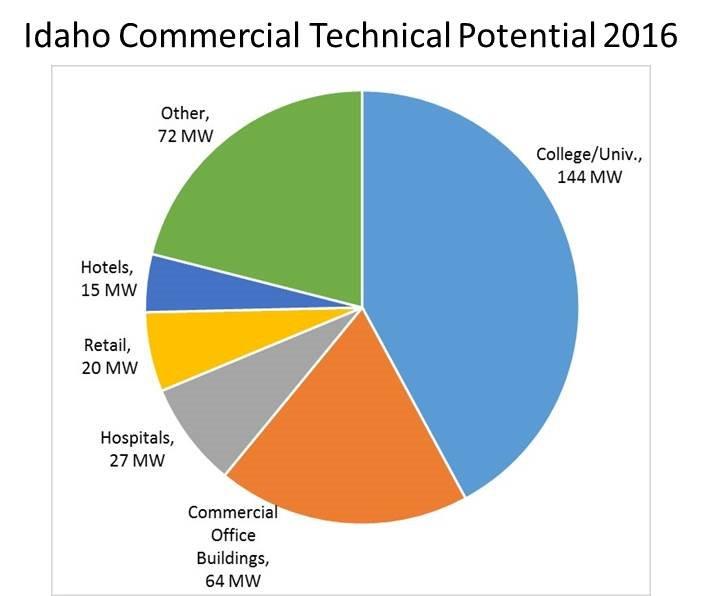
Pulp and paper mills
Pulp and paper mills are a classic example of the best utilization of CHP, and have been for decades. Some even produce surplus energy that they sell back to the utilities, which provides additional revenue. Pulp and paper mills are large consumers of "hog fuel," (course wood chips and bark) which is a product of sawmill operations. In addition, mills combust the spent liquors from the kraft and sulphite processes. The steam produced from the burning of the hog fuel and spent liquors usually generates enough electricity and process steam to run the mill.
Studies
Forest products
As a region made up of states with vast forest lands, it is only natural that forest products would be a large industry.
Studies
Food Processing
The Northwest is one of the top agricultural producers in the U.S., which means the necessity of food processing plants. The industry is dependent on energy for the processes required for food freshness and safety. The food industry uses energy for food preservation, safe and convenient packaging, and storage. Food preservation is dependent on strict temperature controls. Safe and convenient packaging is extremely important in food manufacturing and is also energy intensive. Thermal processing and dehydration are the most commonly used techniques for food preservation, and require significant amounts of energy. The food industry uses energy for food preservation, safe and convenient packaging, and storage. Food preservation is dependent on strict temperature controls. Safe and convenient packaging is extremely important in food manufacturing and is also energy intensive.
Approximately half of all energy end-use consumption is used to change raw materials into products (process use). Process uses include process heating and cooling, refrigeration, machine drive (mechanical energy), and electro-chemical processes.
Process heating uses approximately 29% of total energy in the food industry, while process cooling and refrigeration demands about 16% of total energy inputs. Processing uses 78% of electricity with 48% used for machine drive and 25% for process cooling and refrigeration.
Boiler fuel represents nearly one-third of end-use consumption. This energy was transformed into another energy source. For example, boiler fuel can be used to produce steam, which can have end uses.
Studies
Farm Energy/Dairies
Anaerobic digestion is the breakdown (“digestion”) of biodegradable material by bacteria in an oxygen-free environment. An anaerobic digester is an industrial system that harnesses these natural processes to treat waste, produce biogas that can be used to power electricity generators, provide heat, and a soil amendment.
Studies
Wastewater treatment facilities
More than 500 large WWTFs (with influent flow rates greater than 5 million gallons per day [MGD]) around the country use anaerobic digesters to process their waste—thereby producing biogas. If all of these facilities used their biogas to fuel CHP, they would generate an additional 340 megawatts (MW) of clean electric capacity each year. This increase in CHP use would eliminate approximately 2.3 million metric tons of carbon dioxide annually—equivalent to removing the emissions of almost 430,000 cars or planting nearly 640,000 acres of forest. (Source: EPA CHP webpage)
Anaerobic digestion is the breakdown ("digestion") of biodegradable material by bacteria in an oxygen-free environment. An anaerobic digester is an industrial system that harnesses these natural processes to treat waste, produce biogas that can be used to power electricity generators, provide heat, and a soil amendment.
Colleges and Universities
As large complexes of buildings requiring significant amounts of energy (heat, steam, chilled air, hot and cold water and often power), colleges and universities are a market that cannot go unnoticed. Improved energy efficiency goes in tandem with cost reductions. The Northwest has many colleges and universities. This is one of the target markets for the Center.
Critical Facilities
Short and long-term failures of electric delivery systems commonly associated with natural disasters or man-made events have economic and/or social impacts on major manufacturing facilities, schools, Wastewater Treatment Facilities, correctional institutions, transportation systems, critical medical facilities, and first responder capabilities. During and after Hurricane Sandy, Combined Heat and Power Systems (CHP) enabled many of these facilities as well as other critical infrastructure facilities as defined by Section 1016(e) of the Patriot Act of 2001 to continue operations. Critical infrastructure (CI) collectively refers to those assets, systems, and networks that, if incapacitated, would have a substantial negative impact on national or regional security, economic operations, or public health and safety. The use of CHP continues to expand as a resource for operational support during local or regional power grid failures.
Studies
- Guide to Using Combined Heat and Power for Enhancing Reliability and Resiliency in Buildings (September 2013) To assist State and local officials and others involved in the rebuilding process after Hurricane Sandy, the U.S. Department of Energy (DOE) and the U.S. Environmental Protection Agency (EPA) developed this guidance on CHP with the U.S. Department of Housing and Urban Development (HUD). It contains practical information on CHP, what factors must be considered when configuring CHP systems to operate independently of the grid, and steps involved in a ‘typical’ CHP development process.
- Combined Heat and Power: Enabling Resilient Energy Infrastructure for Critical Facilities (March 2013) – This publication prepared for Oak Ridge National Laboratory by ICF International includes a series of case studies on critical commercial, industrial, and public health and safety facilities that remained operational during Hurricane Sandy because of existing CHP systems that had been incorporated into their operations.